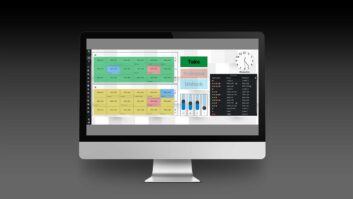Rising competition from over-the-top (OTT) streaming service providers, rapidly changing consumer expectations, and the introduction of disruptive emerging technologies – including artificial intelligence (AI) – are converging to transform the broadcast sector. Consequently, leaders in the industry are accelerating efforts to modernise investments in production and information technology to support new workflows and operations that will enhance their market positions, according to Eric Deniau, senior vice president of research and development at VITEC.
“The broadcast sector is an industry in transition. Participants face challenges from other broadcasters and increasing competition from streaming providers with lower operational costs – and simpler distribution mechanisms – through the strategic application of internet protocol-based (IP) infrastructures,” he explains.
It is an important context because most broadcasters operate in very fragmented environments that have evolved to their current state over decades. Essential elements of the production process are often executed in siloed environments and managed in islands of automation that are not integrated. As a result, disconnected processes are often cobbled together manually to capture content, process and edit content, and then prepare programming for distribution to audiences.
Disruptive technology developments alter content development
To address this complexity, several technological developments over the past five years have led to the rising viability of high-quality IP video production and distribution processes.
“Advanced compression standards have created gains of about 50 per cent in asset file-size efficiency every seven years. This, combined with increased internal network capacity, is democratising the development and distribution of compressed and uncompressed video feeds,” Deniau states.
While this is good news for broadcasters, it also reduces the barriers to entry for OTT streaming providers. So do advances in encoding/decoding and efficient routing algorithms, which have reduced screen-to-screen latency at the frame level over standard information technology (IT) networks.
“The emergence of new protocols enabling the delivery of full broadcast-compatible data over IP networks (such as SMPTE ST 2110) further increases opportunities to integrate production workflows with distribution mechanisms,” continues Deniau. “This allows organisations to leverage corporate networks to support full broadcast-quality video with compressed low-resolution proxies, streamlining production operations and creating opportunities for broadcasters to remove costs while accelerating time-to-value.”
Finally, the digital nature of video over IP makes it a prime candidate for AI-powered algorithms. When combined with metadata, AI creates powerful management tools for storage, retrieval, editing, mixing, and all sorts of computer-based processing.
“This has laid a foundation for production managers to achieve higher output levels with lower efforts while also developing more targeted content. But it is not enough to simply apply the technologies. Broadcasters should revisit their processes to ensure optimal efficiency from a technical and financial perspective,” he states.
Critical investments in talent, technology and tactics
Harnessing these new technology-enabled operations will require executives and IT leaders to adapt their current strategies.
Broadcasters must ensure that their corporate IT networks are upgraded or re-designed to handle the volume and complexity of new video applications and traffic flowing over corporate infrastructures. They must also decide on interface strategies for managing interactions between corporate and external distribution networks. This represents a significant shift in conventional practices because broadcast production facilities have traditionally been siloed from corporate infrastructure.
“VITEC is committed to enabling higher levels of agility while introducing opportunities to enhance sustainability practices across the industry,” states Deniau. “Our mission is to develop tools and technologies that are easy to deploy and simple to use while offsetting the energy and carbon implications with technology that mitigates the environmental and business impact of there being more video captured, produced, and distributed than ever before.”






